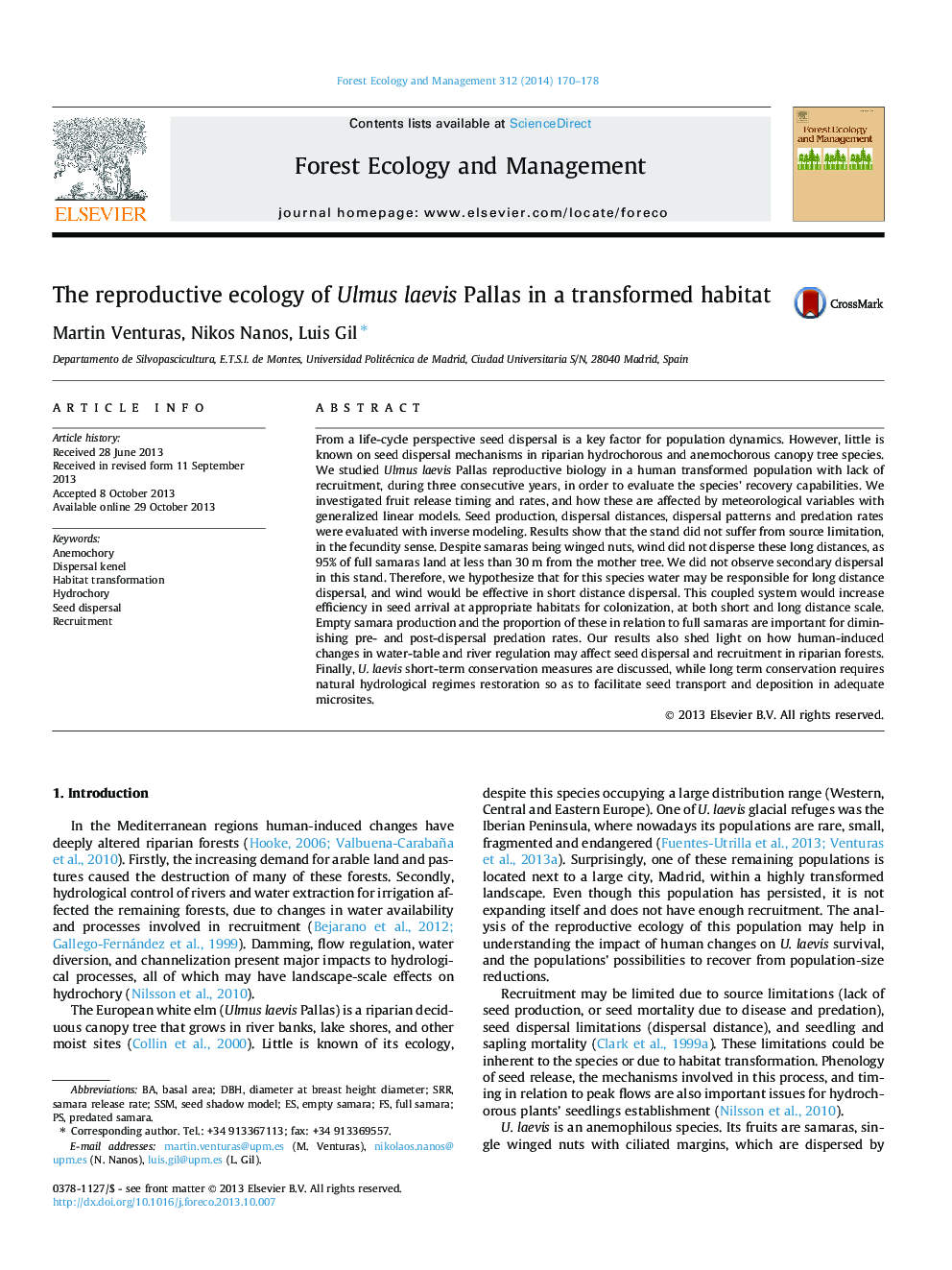| کد مقاله | کد نشریه | سال انتشار | مقاله انگلیسی | نسخه تمام متن |
|---|---|---|---|---|
| 86785 | 159211 | 2014 | 9 صفحه PDF | دانلود رایگان |

• Recruitment is affected by changes in water-table and hydrological regimes.
• Microsite conditions determine recruitment spatial aggregation.
• Ulmus laevis fruits are dispersed short distances by wind (<30 m).
• Empty samara production and dispersal reduce seed predation.
• Riparian restorations must contemplate hydrological regimes effect on hydrochory.
From a life-cycle perspective seed dispersal is a key factor for population dynamics. However, little is known on seed dispersal mechanisms in riparian hydrochorous and anemochorous canopy tree species. We studied Ulmus laevis Pallas reproductive biology in a human transformed population with lack of recruitment, during three consecutive years, in order to evaluate the species’ recovery capabilities. We investigated fruit release timing and rates, and how these are affected by meteorological variables with generalized linear models. Seed production, dispersal distances, dispersal patterns and predation rates were evaluated with inverse modeling. Results show that the stand did not suffer from source limitation, in the fecundity sense. Despite samaras being winged nuts, wind did not disperse these long distances, as 95% of full samaras land at less than 30 m from the mother tree. We did not observe secondary dispersal in this stand. Therefore, we hypothesize that for this species water may be responsible for long distance dispersal, and wind would be effective in short distance dispersal. This coupled system would increase efficiency in seed arrival at appropriate habitats for colonization, at both short and long distance scale. Empty samara production and the proportion of these in relation to full samaras are important for diminishing pre- and post-dispersal predation rates. Our results also shed light on how human-induced changes in water-table and river regulation may affect seed dispersal and recruitment in riparian forests. Finally, U. laevis short-term conservation measures are discussed, while long term conservation requires natural hydrological regimes restoration so as to facilitate seed transport and deposition in adequate microsites.
Journal: Forest Ecology and Management - Volume 312, 15 January 2014, Pages 170–178